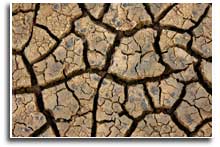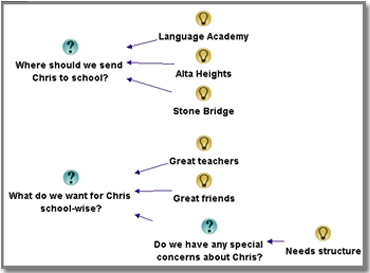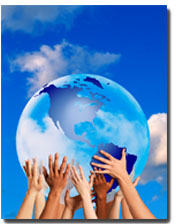“I just watched your YouTube video on Issue-mapping. I think your work on the subject is marvelous. I think I’ve told you before that I’ve spent more than a decade thinking about and articulating a logic of dialogue. I’m convinced that questions play a key and underappreciated role in thinking, and that clarity requires, among other things, that one understand the role that various conversational contributions play in issue space. Your issue-mapping techniques are as powerful a way of accomplishing this as I’ve come across, and I want you to know how much I appreciate what you’re doing.”
Andy Norman, Professor, Department of Philosophy, Carnegie Mellon University
“I see Issue Mapping as giving me a competitive edge over other consultants in my field and a way to build a great client relationship from the project outset. To sound somewhat cliché, I [would] recommend this course to almost everyone I talk to when it comes to dealing with issues, particularly in the corporate environment I operate within.”
Andrew Jolly
IT consultant
Issue Mapping Webinar Graduate
“The primary value of the Issue Mapping Webinar Series was gaining new understanding on how to run more effective meetings. The course is helping me ask the right questions. I would recommend it to any manager!”
Keith DiAngels
Medidata Solutions, Inc.
Webinar participant
"What is needed is a framework that augments our collective intelligence (Engelbart, 1963), giving us the capacity to include the full range of stakeholders and perspectives, and to embrace the complexity of disagreement and controversy, rather than simplifying it away."
(Jeff Conklin: from paper presented at Conference on Online Deliberation, 2008.)
Climate Change
CogNexus Institute was a founding member of an exciting new project to engage in Human-Centred Computing for Climate Change Deliberation, using what we've learned about wicked problem sense making over the past 20 years to address one of the wickedest problems humanity is facing.
Climate change deliberation materials

|
Issue Mapping is the process of crafting an issue map, a way of making critical thinking visible. An issue map is a graphical network that integrates many problems, solutions, and points of view and shows the deep structure of an issue.
Issue maps can be sketched on paper, but larger issue maps are typically crafted using a software tool such as Compendium.
Issue Mapping frames things as issue-based rather than the conversational basis that we humans most often use, which favors dualistic (either-or) thinking, sloppy arguments, lack of evidence, tangents, implicit assumptions, skipped steps, bias, and over-simplification. Issue Mapping admits all viewpoints and offers a way of engaging and understanding an issue in a whole sense. The map holds competing views and contending actions in place visually, so that the brain can absorb the bigger picture and appreciate the validity and value of a larger perspective. Issue Mapping helps groups avoid jumping to easy answers or superficial conclusions, and promotes deeper reasoning, rigor, and even wisdom.
 Issue Mapping supports the kind of thinking referred to by Laurence J. Peter when he said, “Some problems are so complex that you have to be highly intelligent and well informed just to be undecided about them.”
View a short YouTube demo illustrating the difference between conversational structure and issue-based structure. (If you have trouble viewing the YouTube site, try this version.)
Issue maps can be applied to any question or problem, such as how to reduce costs in a large system, resolve a thorny and persistent organizational problem, or negotiate a delicate environmental policy. The more complex and contentious an issue is the more useful an issue map can be in revealing the underlying logical structure among the problem parts.
The underlying language of Issue Mapping, IBIS (Issue Based Information System), was developed for the design process, and design, taken broadly, is what the knowledge economy is all about. IBIS (pronounced "eye-bis") was created by Horst Rittel and has been in use for over 40 years. Though it has been slow to catch on, IBIS may be one of the most important inventions of the 20th century. It is intuitive and simple, using just three basic elements of human thinking -- questions, ideas, and arguments -- yet is powerful enough to capture the structure of the complex issues facing humanity, such as global warming, terrorism, and genetically modified organisms.
At the heart of IBIS’s power is the amazing capability of questions, when framed in an open and systematic way, to create new distinctions and new clarity out of the fog of social complexity and collapsed meanings.
Issue Mapping can be used effectively for everyday business and personal decisions, but its potential is vast. Through the skillful use of questions an issue map has unlimited capacity to represent and clarify diverse points of view, conflicting interpretations and goals, inconsistent information, and other forms of complexity. Issue Mapping can even be applied to wicked problems ... if the politics of the situation allows for transparency, clarity, and rigor!
Issue Mapping is Dialogue Mapping minus group facilitation. Issue Mapping is like writing – it is the process of analyzing and synthesizing information, often by an individual, to capture the essence and structure of a problem, whereas Dialogue Mapping of a meeting conversation involves an experienced mapper creating an issue map on the fly for the purpose of facilitating the convergence of the participants.
Issue Mapping focuses on map production, Dialogue Mapping on the coherence of the conversation. The difference can be subtle. For example, a group can do Issue Mapping by collaboratively building out the content of the nodes and the structure of the links in a map, but a solitary person cannot do Dialogue Mapping!
Even as the urgency and complexity of global issues is increasing, our ability to absorb and make sense of that complexity has remained constant, both as individuals and as groups. Indeed, fundamentalism may be an increasingly seductive way to simplify the 'buzzing, blooming confusion' of life. But we don't need more fundamentalism -- we need better tools for conceptualizing and visualizing the richness of the situation, so that more people can engage with the Big Picture: the many points of view, the conflicting data, and the unaddressed questions. Issue Mapping is such a tool. Although the immediate focus of the Issue Mapping Courses is getting a handle on personal and business issues, the ultimate vision for this work is to provide a lingua franca that allows diverse stakeholders to build systematically toward shared understanding of most complex, urgent, and intractable challenges facing humanity.
|
Contents of this web site and all original works are copyright © CogNexus Institute - All rights reserved. The material on this site may not be reproduced, distributed, transmitted or otherwise used, except with the prior written permission of owner.



